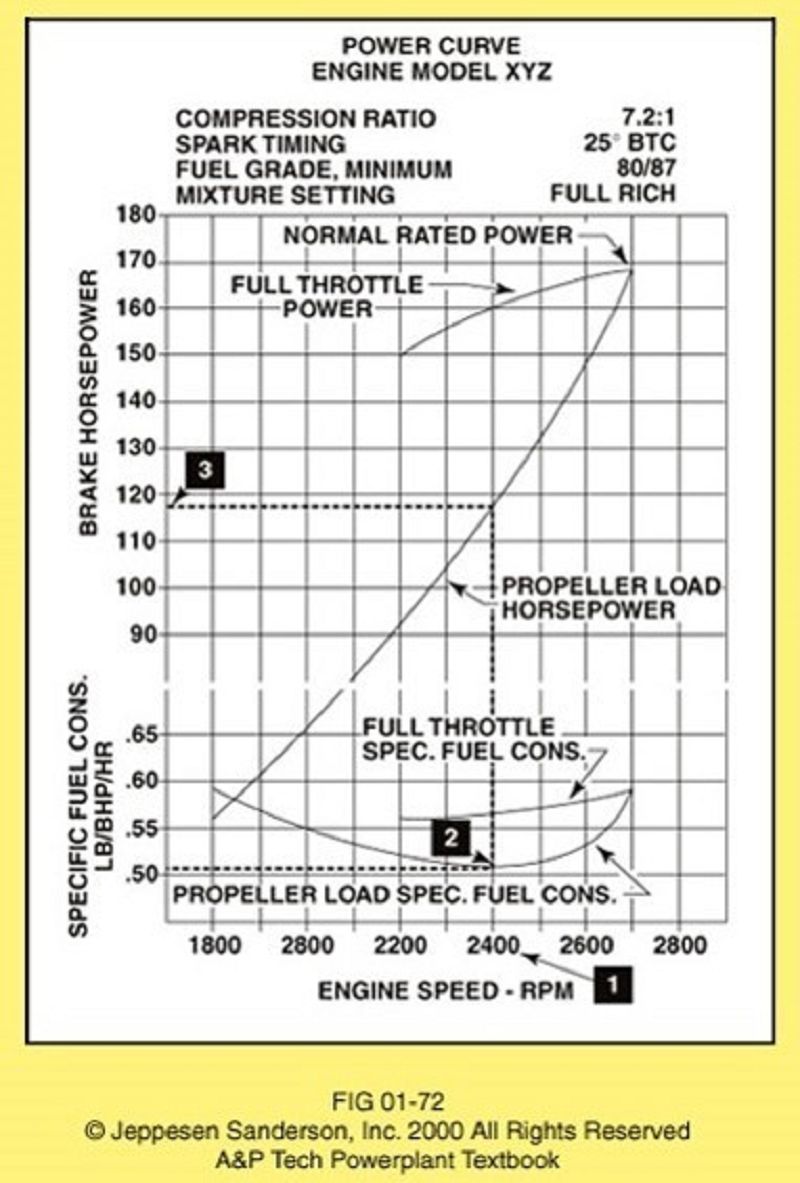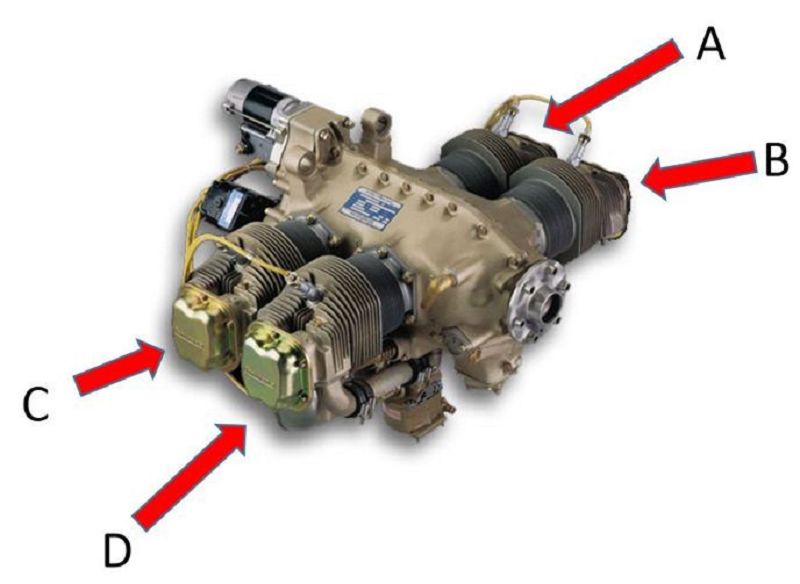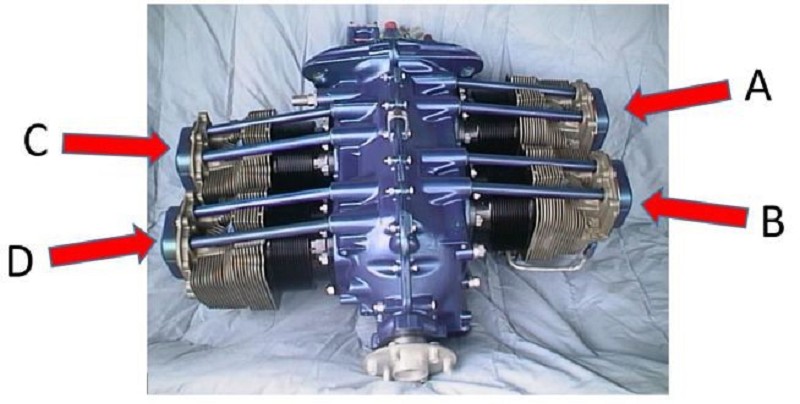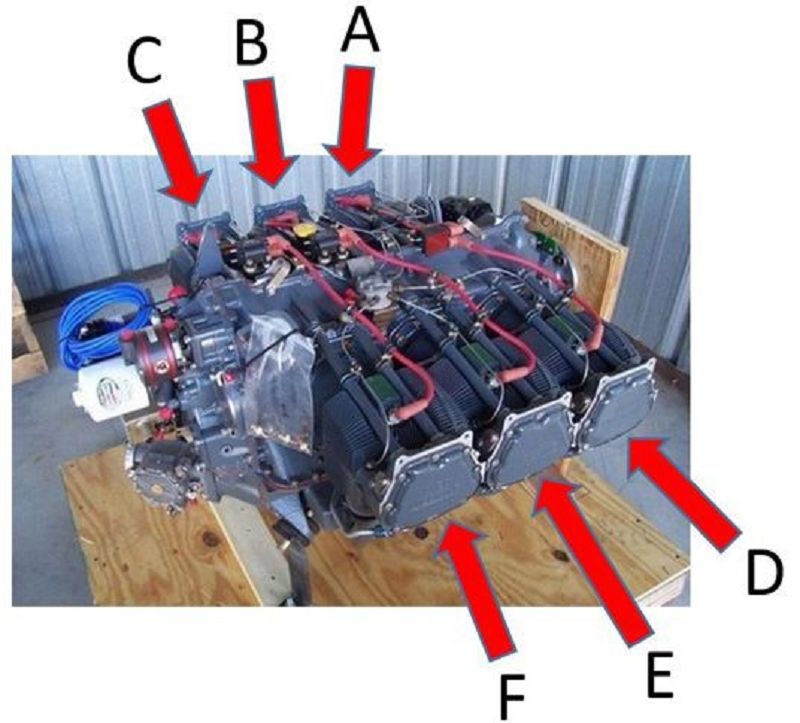Piston 1 - Review Questions Week 2 - pt.1


Continental 4 Cylinder engine
What cylinder number is pointed to by "D"
33,000
In this equation the L and the A stand for:

Continental 4 Cylinder engine
What cylinder number is pointed to by "A"

Calculate the total displacement of the Continental IO550C six cylinder engine with the following dimensions:
A= Area of the piston head: Piston radius is 2.7 inches
L= Length of the stroke: 4.9 inches
N= Number of cylinders of the engine (given above)
Please use 3.14 for Pi
Please give answer to the nearest whole number, no decimals.


Lycoming 4 Cylinder engine
What cylinder is pointed to by "C"
Calculate the compression ratio of the cylinder:
Volume of the cylinder with the piston @ BDC: 134 cubic inches.
Volume of the cylinder with the piston @ TDC: 35 cubic inches.
Please give answer to 1 decimal place.

Lycoming 4 Cylinder engine
What cylinder is pointed to by "D"

Lycoming 6 Cylinder engine
What cylinder is pointed to by "D"?
Calculate the total displacement of the Lycoming IO720C eight cylinder engine with the following dimensions:
A= Area of the piston head: Piston radius is 2.9 inches
L= Length of the stroke: 4.8 inches
N= Number of cylinders of the engine (given above)
Please use 3.14 for Pi
Please give answer to the nearest whole number, no decimals.
Calculate the compression ratio of the cylinder:
Volume of the cylinder with the piston @ BDC: 167 cubic inches.
Volume of the cylinder with the piston @ TDC: 30 cubic inches.
Please give answer to 1 decimal place.

Calculate the total displacement of the Lycoming IO360B four cylinder engine with the following dimensions:
A= Area of the piston head: Piston radius is 2.6 inches
L= Length of the stroke: 5.4 inches
N= Number of cylinders of the engine (given above)
Please use 3.14 for Pi
Please give answer to the nearest whole number, no decimals.